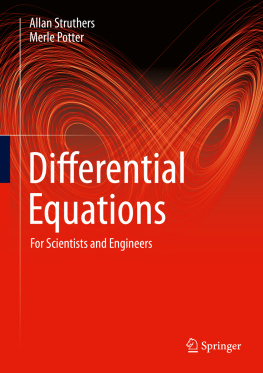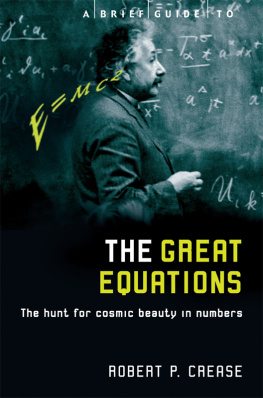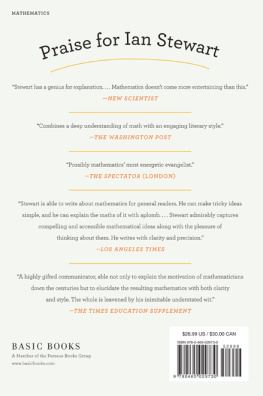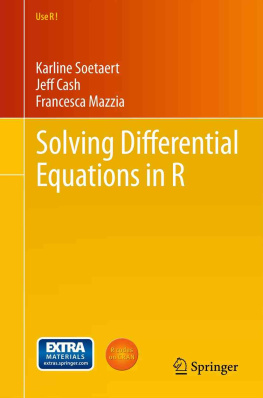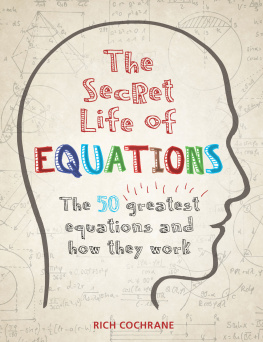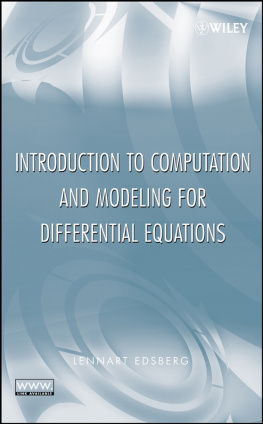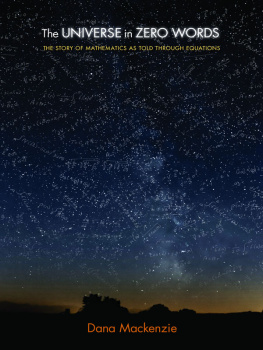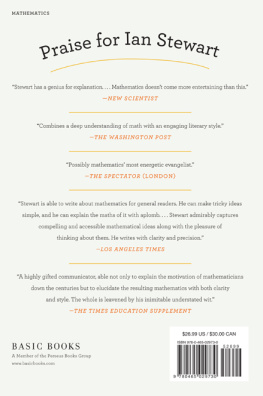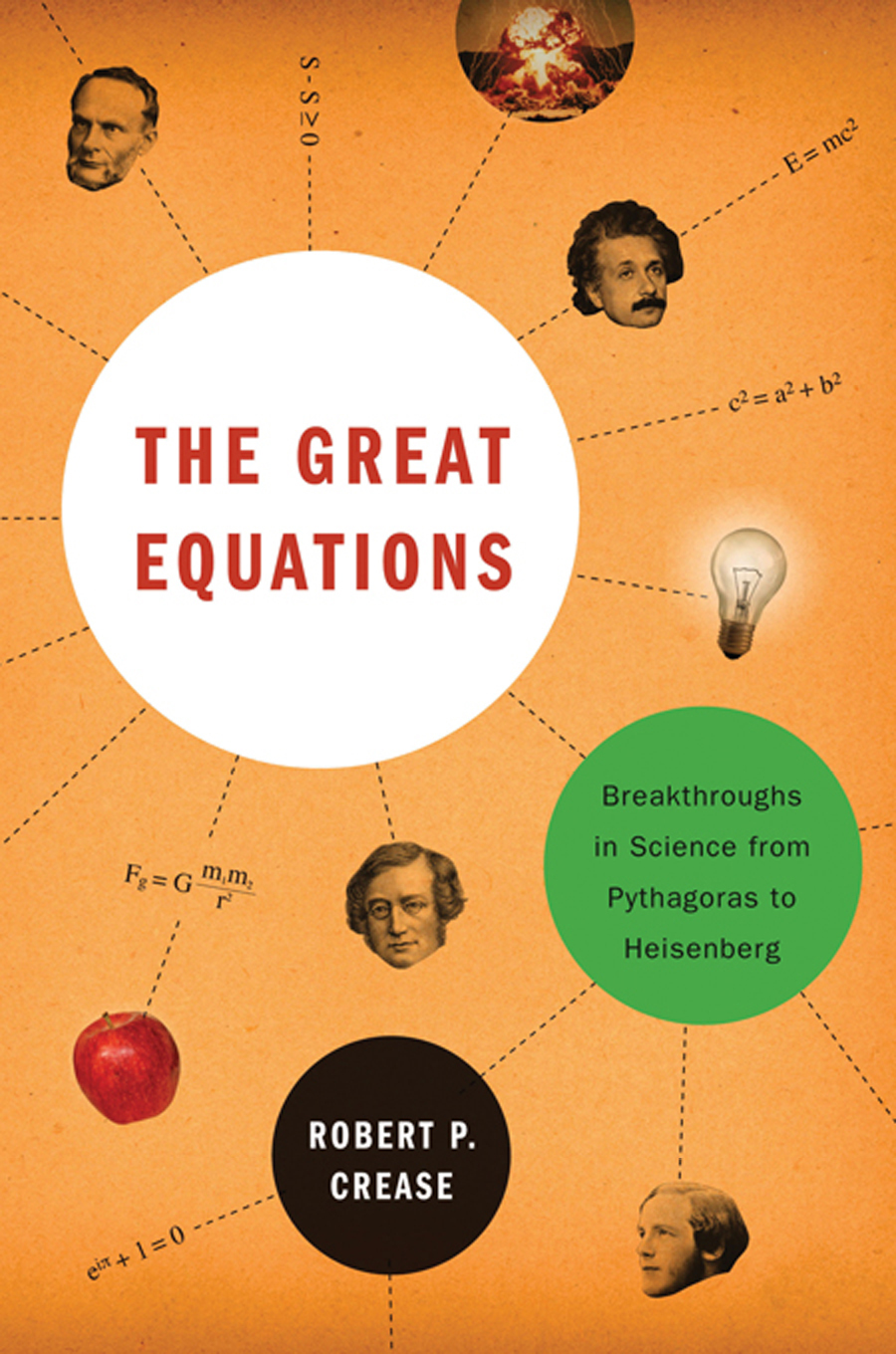
ALSO BY ROBERT P. CREASE
The Prism and the Pendulum: The Ten Most Beautiful
Experiments in Science
Making Physics: A Biography of Brookhaven National Laboratory
The Play of Nature: Experimentation as Performance
The Second Creation: Makers of the Revolution in Twentieth-Century Physics (with Charles C. Mann)
Peace & War: Reminiscences of a Life on the Frontiers of Science (with Robert Serber)
TRANSLATED BY ROBERT P. CREASE
What Things Do: Philosophical Reflections on Technology, Agency, and Design
American Philosophy of Technology: The Empirical Turn
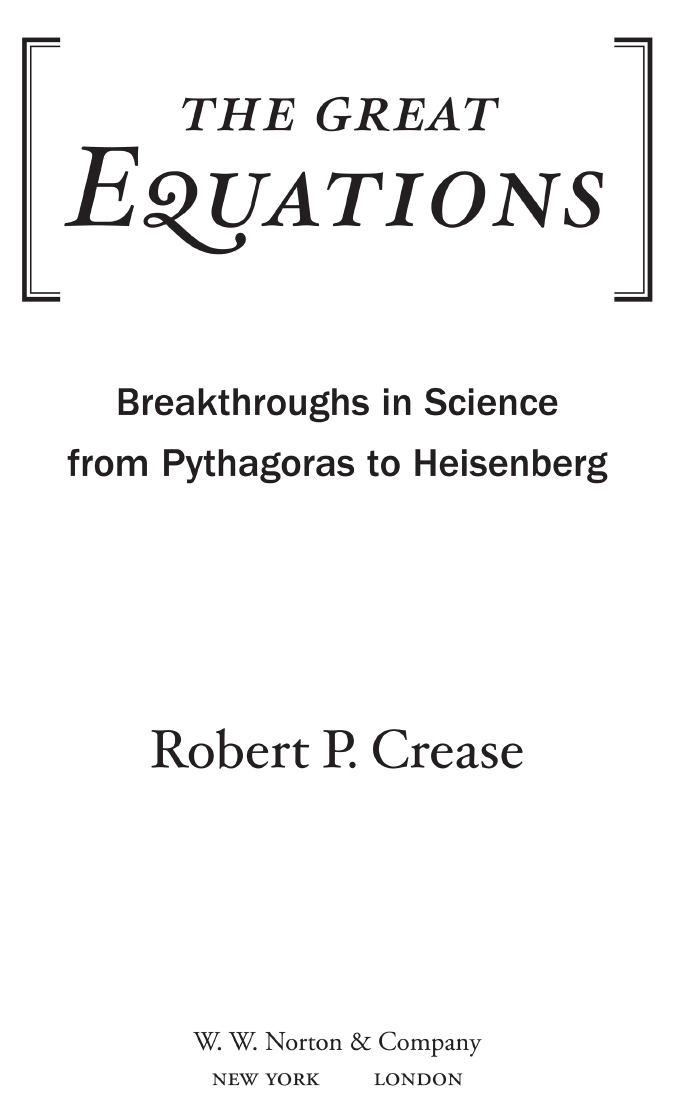
For Stephanie,
beyond category
CONTENTS
INTRODUCTION
The first equation that most of us learn is a synonym for simplicity:
1 + 1 = 2
So elementary, yet so powerful! It imparts the very definition of addition: one unit plus one unit equals two units. It is powerful, too, because it exhibits the format for every other equation: in arithmetic, mathematics as a whole, physics, and other branches of science. It shows an arrangement of terms that asserts a particular kind of relationship among them. This little but fundamental equation opens so many doors that it seems like a magic wand. It is virtually the entre into knowledge itselfthe first little step, the basis for each of thousands of steps to follow. Richard Harrison, a poet and English teacher at Mount Royal College in Calgary, Canada, once wrote to me of this profound expression:
1 + 1 = 2 is the fairy tale of mathematics, the first equation I taught my son, the first expression of the miraculous power of the mind to change the real world. I remember my son holding up the index fingerthe one fingerof each hand as he learned the expression, and the moment of wonder, perhaps his first of true philosophical wonder, when he saw that the two fingers, separated by his whole body, could be joined in a single concept in his mind.... [W]hen I saw my sons mind open in understanding that 1 + 1 was more than 1 + 1 I saw that small equation as my childs key not to what was wonderful in the outside world, but what was wonderful in him and all of us.
Harrisons description reminds us that learning an equation, at least of the kind as fundamental as 1 + 1, is in effect a kind of journey. It is a journey that takes place in three stages. We begin navely without knowing the equation. We are led by schooling or accident or curiosity or intent to comprehend it, often accompanied by dissatisfaction and frustration. Finally, the experience of learning it transforms the way we experience the world, which fills usnaturally, if sometimes only momentarilywith wonder.
This book is about those journeys.
The first human beings lived without equations, and had no need for them. There were no equations in the Garden of Eden, not even on the Tree of Knowledge. None were present in the Sumerian paradise Dilmun, nor in the cosmic egg in which some Chinese believe that Pan Ku hatched the world, nor in any of the other places where various divine creation myths say that the first humans dwelt. Human beings did not even have the idea of equations. That idea is a human invention, the result of our efforts to make sense of the world. Even so, human beings did not wake up one day and suddenly decide to invent equations. They acquired the need to over time, and the idea of an equation in the scientific-technical sense first appeared late in human history.
The Latin word aequare means to make level or even. Many modern English words spring from this root, including adequate, equanimity, equality, equilibrium, egalitarian, equivalence, and equivocation. The word equation at first simply meant a partitioning into equal groupings. The equator, for instance, is the imaginary line drawn by geographers to separate the earth in two roughly equal halves. Medieval astrologers used the word equation to refer to their practice of arbitrarily dividing up the path followed by the sun and planets into equal areas, each allegedly governed by a different constellation.
Meanwhile, numbers and counting were becoming important in human life. Businessmen used them in bookkeeping, finance, and budgets; religious authorities used them for record-keeping of years, seasons, and occasions such as births, deaths, and marriages; and in government officials used them in census, and for surveying and taxes. In the third century BC, the Greek mathematician Diophantus took another step, using symbols to stand for unknown quantities, and providing some rules for operating on such quantities, including subtraction and addition. He showed not only how to use symbols to describe an unknown number so that it could be determined from known numbers (what is called a determinate equation) but also how symbols could describe something with an infinite set of solutions (a Diophantine or indeterminate equation). It was still a long route to the modern notion of equations. Even Galileo and Newton express their important resultsGalileos law of falling bodies, and Newtons laws of motionin the form of ratios expressed in words, not in the familiar equation form known to science students. Not until the eighteenth century did natural scientists routinely express their conclusions in the form of equations as we know them today.
A long historical and conceptual journey was required, therefore, to write even the simplest of equations. In 1910, Alfred North Whitehead and Bertrand Russell, two of the greatest mathematicians in history, published the Principia Mathematica , a famous, three-volume systematic textbook that derives the foundations of mathematics from the ground up in a purely logical way. When does the equation 1 + 1 = 2 first make its appearance? Well over halfway through volume one!
Thanks to this long journey, the word equation eventually came to have a technical meaning as part of a specially constructed languageto refer to a statement that two measurable quantities, or sets of measurable quantities, are the same. (Strictly speaking, then, statements expressing inequalities are not equations.) In this codelike constructed language, indispensable to modern mathematics and science, symbols stand for sets of other things on which various operations (addition, subtraction, multiplication, and division being the simplest) can be carried out.
Ever since this special technical language was developed, each individual equation has had two different types of discoveries. It was originally discovered by the first person to come across itby the person or persons who introduced it into human culture. And it is rediscovered by each person who learns it since.
The journey to a particular equation has a different kind of setting than that of other historical turning points. The appearance of equations is not framed by bloody battlefields or by clashes of titanic political forces. Equations tend instead to emerge in quiet locations, such as studies and libraries, removed from distractions and encroachments. Maxwell wrote down his world-transforming equations in his study; Heisenberg began to piece together his on an isolated island. Such environments allow scientists to address their dissatisfactions, to explore the gnawing sense that the pieces at hand are not fitting together well and need some adjustment or the addition of something new. Scientists then can focus on some problem that often can be articulated with deceptive simplicity: What is the length of this side of a right triangle? What is the strength of the force between celestial objects? How does electricity move? Can a given pair of seemingly contradictory theories be made to fit together? Does this make sense?
Next page

